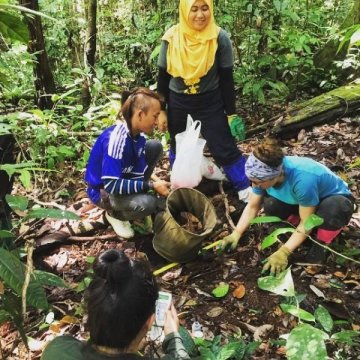Termites mitigate effects of drought in tropical rainforests

Termites are commonly regarded as one of the most destructive insect pests, but in fact only 4% of the 3,000 termite species known globally are pests. Its unknown side was recently revealed by a major new study published in the journal Science — the collaborative research co-led by Dr Louise Ashton of the University of Hong Kong, with researchers from the University of Liverpool and the Natural History Museum, London, has discovered that termites actually help mitigate against the effects of drought in tropical rain forests.
Termites are highly abundant in tropical ecosystems. They are one of the few living creatures that can break down cellulose found in plant material. They create temporary above-ground protective structures called "sheeting" which allows them to move about in the forest even during drought conditions. They are thought to be important for soil processes including decomposing and soil moisture, however the roles of termites in these processes in tropical rainforest have not been fully quantified using real-world experiments. This is because it is quite difficult to suppress the activity of termites. The research team developed novel suppression techniques using toilet paper rolls and regular monitoring of termite communities to understand what termites are doing in tropical rainforests.
This large-scale experiment was established at the beginning of the 2015 El Nino drought and the team carried out the same experiments in 2016 during non-drought conditions. This allowed them to not only investigate the roles of termites in tropical rainforests, but also how drought influences termite activity and the knock-on effects in the ecosystem.
For More: https://www.sciencedaily.com/releases/2019/01/190110141753.htm

